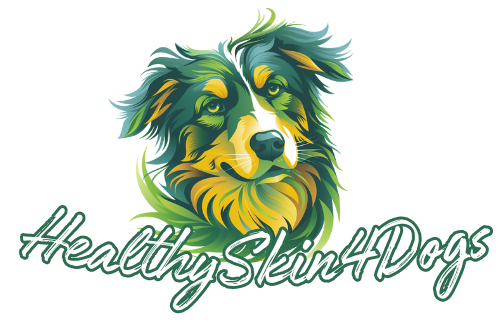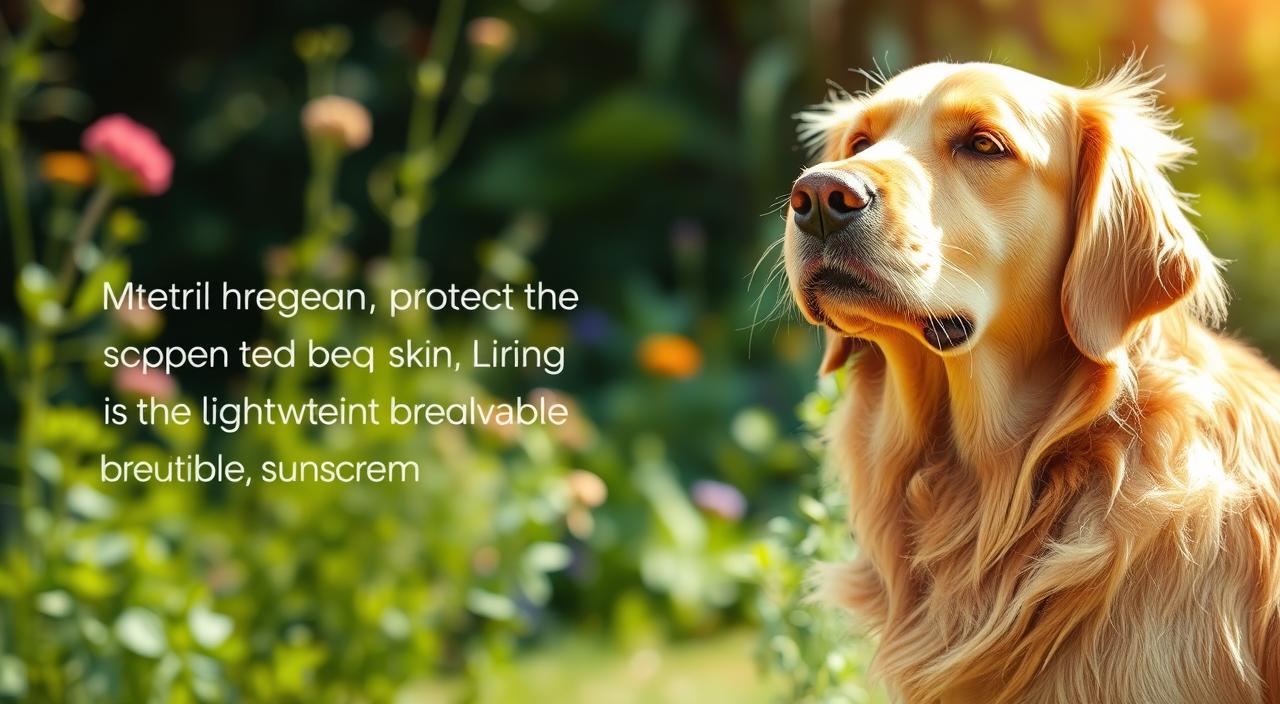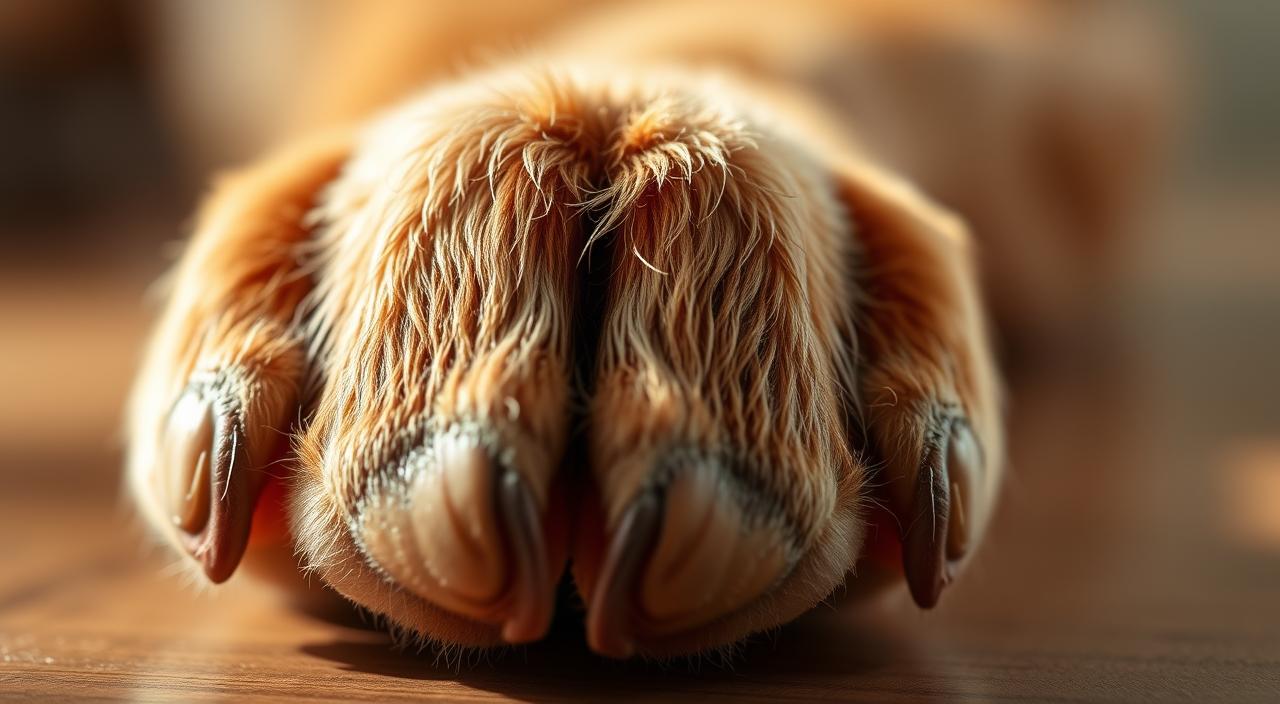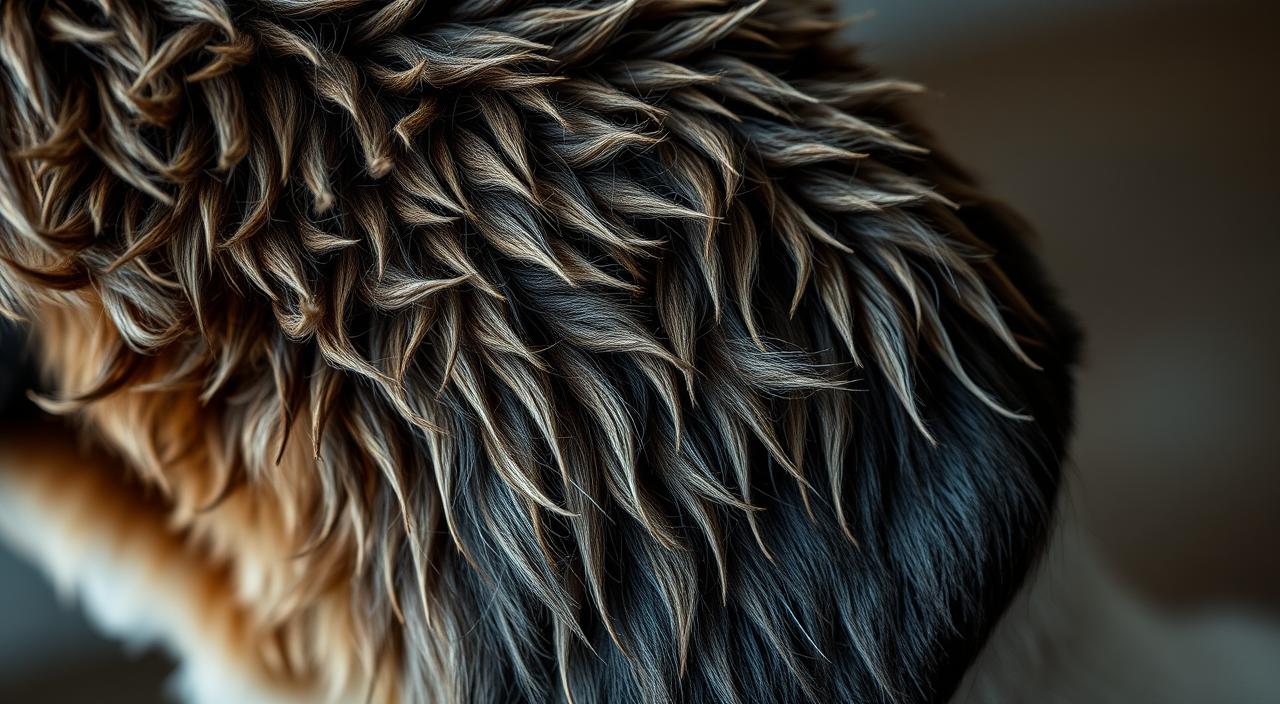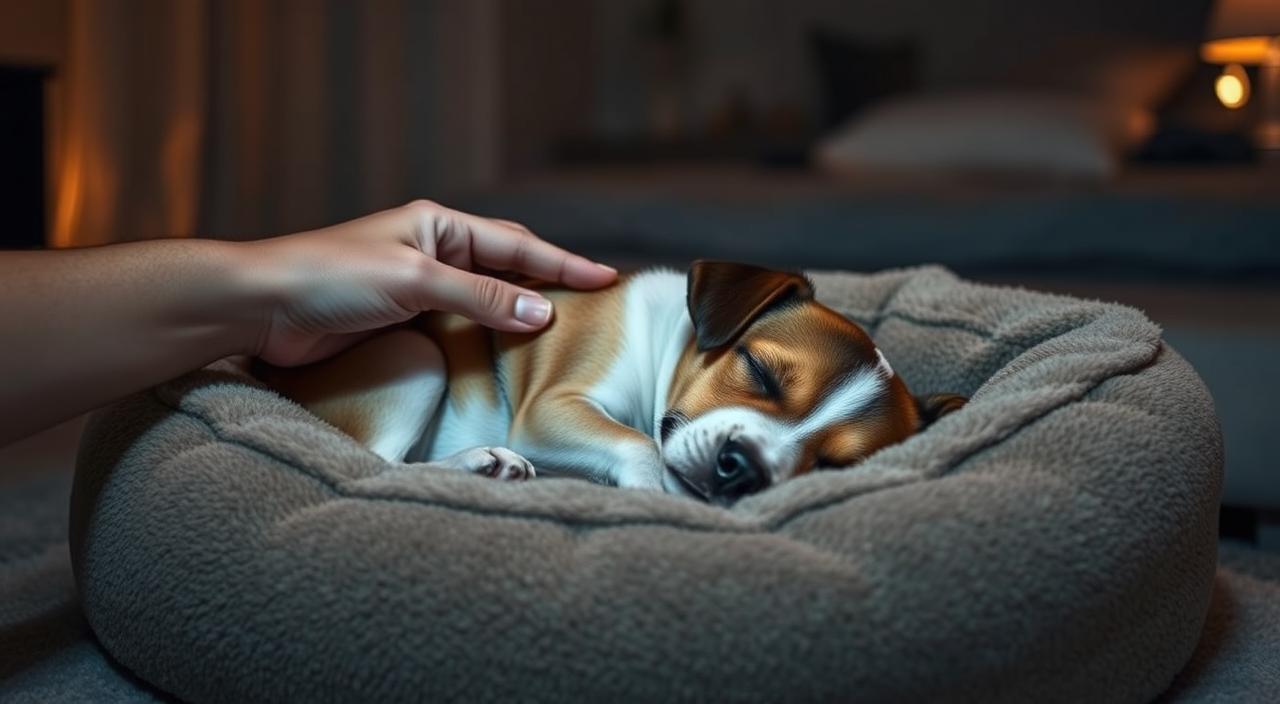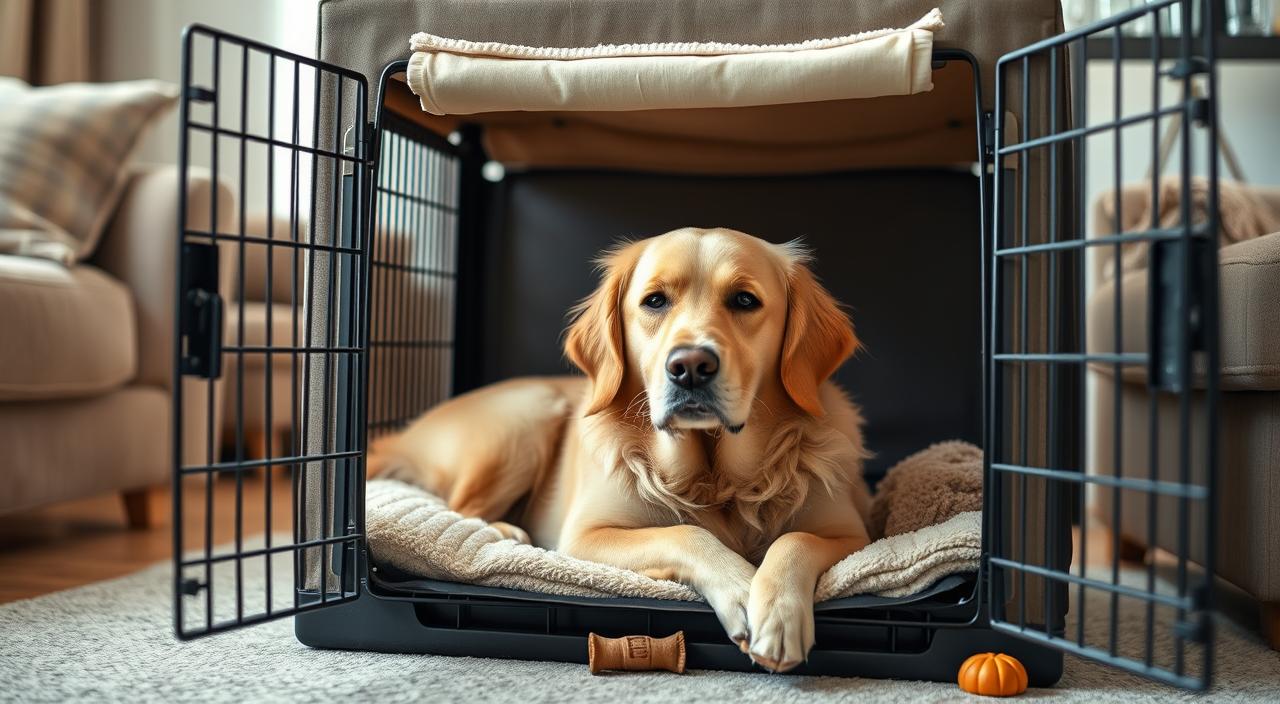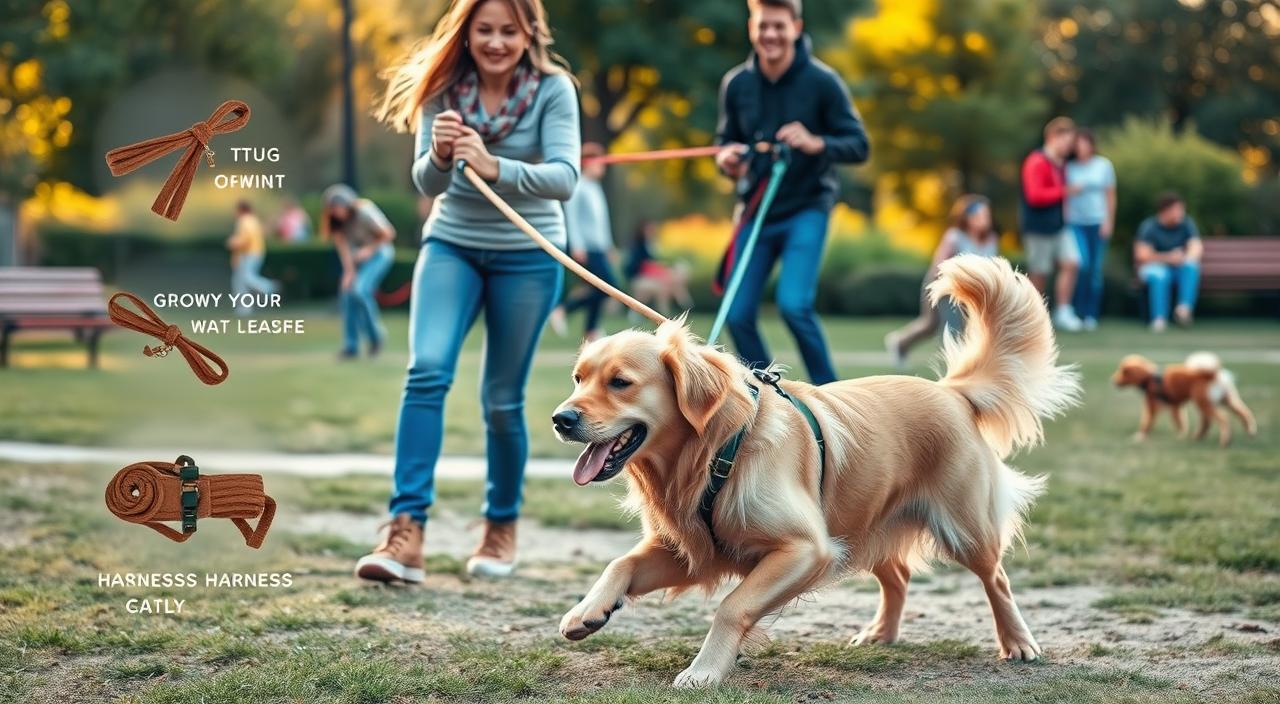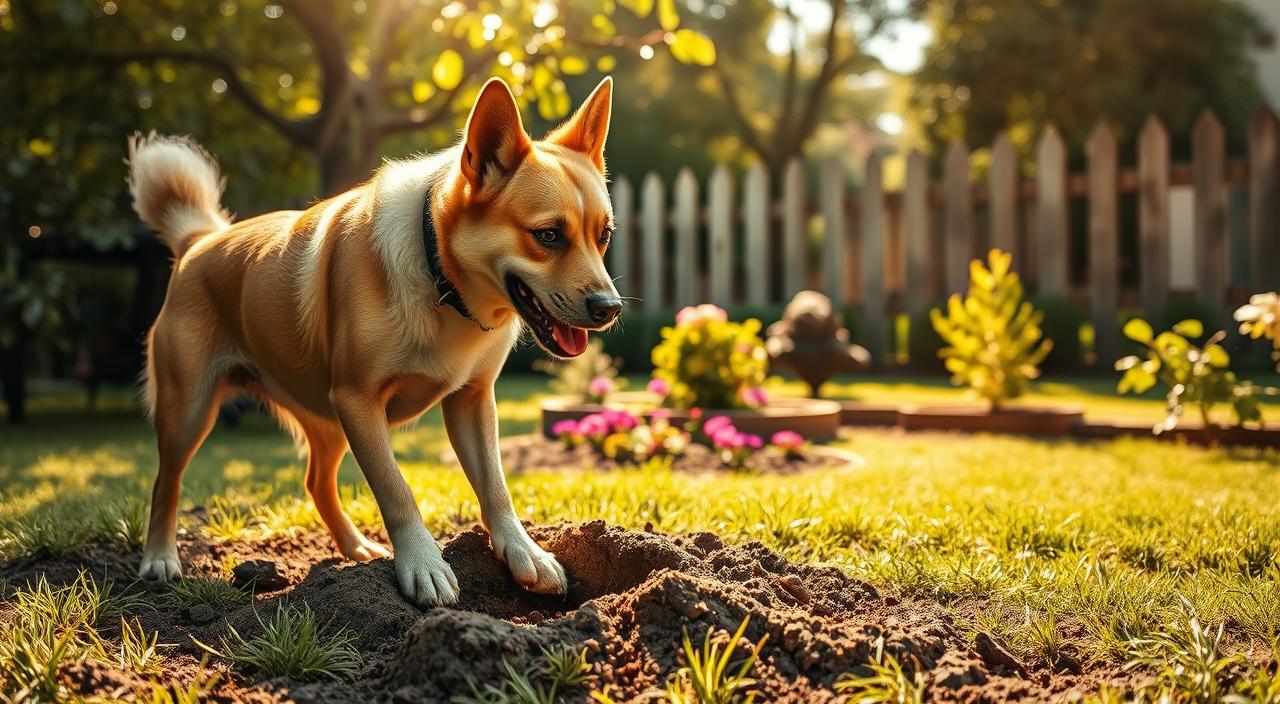You want a clear plan for how to protect dog skin from sun without guesswork, and that starts with simple daily steps that lower sunburn risk and long-term health concerns.
We explain why dogs burn, which areas are most vulnerable, and practical options—sunscreen made for pets, shade planning, and lightweight cover—that fit regular walks and play.
Key Takeaways
- Sun exposure can cause painful burns and raise skin cancer risk in pets.
- Use only pet-safe sunscreen and avoid human formulas with zinc oxide or PABA.
- Plan outdoor time outside peak UV hours and choose shaded routes.
- Light protective clothing and reflective shade help keep dogs cooler.
- Learn signs of mild sunburn and when veterinary care is needed.
Why sun safety matters for dogs right now
Owners often underestimate everyday UV exposure; dogs get sunburn and cumulative damage that mirrors risks seen in humans. Sun-exposed skin can develop problems such as squamous cell carcinoma, malignant melanoma, and hemangiomas—conditions that qualify as skin cancer and require veterinary care.
UV rays peak between 10 a.m. and 4 p.m., so even short outdoor windows matter. Indoor light through windows adds exposure for pets that nap in sunbeams.
- Use dog-safe sunscreen and reapply every 4–6 hours and after swimming.
- Favor shade, fresh water, and timing walks outside peak ray hours.
- A veterinarian can help with special plans for sensitive animals or prior burns.
| Risk Factor | Immediate Action | Best Timing |
|---|---|---|
| Light or thin coat | Apply pet sunscreen; limit exposure | Early morning or late afternoon |
| Bald spots or shaved areas | Cover with clothing and sunscreen | Avoid 10 a.m.–4 p.m. |
| Indoor sunbathers | Move bedding away from direct beams | Year-round habit |
| Prior burn history | Follow veterinarian guidance | Consistent daily protection |
Early prevention beats later treatment: small routine changes yield outsized health benefits for people and pets alike.
Which dogs are most at risk and what parts of the body need protection
Certain breeds and medical conditions raise the chance of painful burns and chronic damage. Owners should scan coat type, pigmentation, and any recent hair loss before heading outdoors.
High-risk examples include hairless breeds such as Xoloitzcuintli and American Hairless Terrier. Dogs with white or thin coats, and those with light-pigmented noses or eyelids, face greater risk. Health conditions that thin hair—like allergies or endocrine disorders—also matter.
High-exposure areas
- Nose, ear tips, and lips — facial parts with thin fur and light pigment.
- Belly, groin, and inner thighs — these body areas burn quickly, especially if the pet lies on its back.
- Eyelids and bald spots — fragile tissue with little natural shielding.
Indoor exposure counts
Standard glass blocks some rays but not all. Pets that bask in sunbeams can build cumulative UV exposure even without outdoor time. A brief scan for new pink spots, shaved sites, or irritated fur saves trouble later.
| Breed or Condition | Risk Level | Recommended attention |
|---|---|---|
| Hairless breeds (Xoloitzcuintli, American Hairless) | High | Consistent coverage and sunscreen on exposed areas |
| White or thin coats; light-pigmented nose/eyelids | Moderate–High | Target nose, ears, and belly first |
| Health-related hair loss (allergies, endocrine) | Moderate | Check bald spots; apply sunscreen or clothing as needed |
Your step-by-step plan to keep your dog safe in the sun
Start with a simple, repeatable plan that keeps outings safe and comfortable for your pet on bright days. Time, gear, hydration, and route choice work together. These steps are practical and easy to follow.
Time it right
Favor early morning or evening walks. Avoid peak UV from 10 a.m. to 4 p.m. If outings fall inside that window, use dense shade and limit exposure on exposed body areas.
Use protective gear
Choose UPF sun shirts and cooling vests to cover large surfaces. Hats and goggles add face and eye coverage when tolerated. Apply pet-safe sunscreen on exposed spots before clothing goes on.
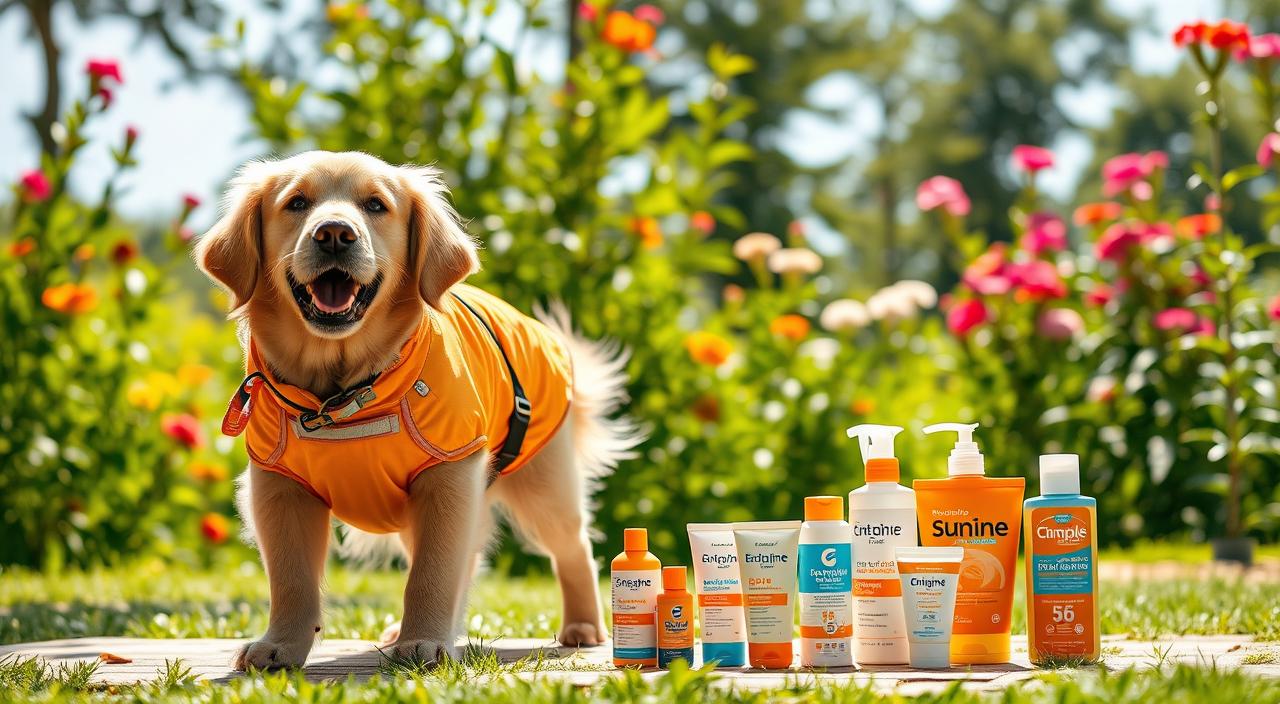
Hydration and rest
Carry water and a collapsible bowl. Schedule rest stops every 15–20 minutes in warm weather. Pair shade with a cool rest area to reduce heat stress while blocking UV.
Pick shadier routes
Choose paths with trees, awnings, or building shade. Bring reflective shade cloths or a small tarp for quick shelter. Keep spare gear in your walk bag or car.
- Make sure your kit has water, a bowl, and a portable shade solution.
- Practice wearing clothing at home so gear feels normal outdoors.
- Check the day’s UV index and adjust the plan as needed.
| Step | Tools | When to use | Benefit |
|---|---|---|---|
| Timing | Schedule app, local UV forecast | Early morning / late evening | Lower cumulative exposure |
| Clothing & gear | UPF shirt, cooling vest, hat, goggles | During long outdoor sessions | Broad physical coverage without added heat |
| Hydration & shade | Water, bowl, reflective shade cloth | Warm days and peak hours | Prevents heat stress and reduces UV impact |
how to protect dog skin from sun
A short checklist makes sunny outings safer and cuts the risk of painful burns for many pets.
Quick checklist before heading out the door
- Check the local UV index and pick a cooler time of day if it’s high.
- Pack water, a collapsible bowl, and a portable shade solution like a reflective cloth.
- Apply a pet-safe sunscreen on exposed zones—nose, ear tips, belly, and groin—and bring a travel-size backup for reapplication.
- Inspect the coat at home: look for thin, shaved, or bald patches and add extra coverage there.
- Bring gear: UPF shirt or cooling vest, and hat or goggles if the animal tolerates them.
- Plan a shaded route and avoid open pavement during peak midday hours.
Common mistakes to avoid when planning outdoor time
Don’t skip small areas. Ear tips, lips, the nose bridge, inner thighs, and belly burn quickly and are often overlooked.
Don’t rely on clouds. UV can pass through haze—keep protection even on overcast days.
Don’t leave reapplication to chance. Set a timer for every 4–6 hours, or sooner after swimming or heavy towel-drying, and carry wipes or a stick for quick refreshes.
| Focus | Best option | When |
|---|---|---|
| Timing | Morning or evening walks | Low UV index |
| Gear | UPF shirt, reflective shade cloth | Long outings / rest stops |
| Reapplication | Travel-size sunscreen or wipes | Every 4–6 hours, after water play |
Choosing dog-safe sunscreen the right way
Not all sun products are safe for animals—read labels and favor pet-specific formulations. Start with safety: make sure the label states it is formulated for pets. Human formulas often contain zinc oxide or PABA, which can be harmful if licked.
Look for broad-spectrum claims that block both UVA and UVB rays. Water-resistant and unscented formulas help with play and sensitive skin. An SPF 30 equivalent is a useful benchmark for regular outings.
Formats matter for routine use. Sprays cover bellies quickly. Balms and sticks give precise application for noses and ear tips. Wipes and lotions work for touch-ups and thin-coated areas.
- Make sure the product label excludes zinc oxide and PABA.
- Prefer non-greasy textures that absorb fast to reduce licking.
- Patch-test new formulas on a small area before wider use.
- Keep a travel-size in your walk bag for reapplication after water play.
| Format | Best use | Pros | Example |
|---|---|---|---|
| Spray | Large areas (belly, sides) | Fast coverage, quick-dry | Epi-Pet K-9 Care (SPF 30+ equivalent) |
| Balm / Stick | Precision spots (nose, ear tips) | Targeted, low mess | Handy Hound SnoutScreen |
| Non-aerosol spray | Whole-body use for active pets | Even spread, lower inhalation risk | Emmy’s Best non-aerosol spray |
| Wipes | Quick touch-ups or gear edges | Portable, simple reapplication | Petkin Sunwipes |
Many pet sunscreens list SPF equivalents; some brands note FDA compliance. Compare directions and reapplication guidance on packaging and choose a product that fits daily habits. For sensitive animals, buy a small size first and patch test before regular use.
How to apply sunscreen to dogs so it actually works
Simple preparation and precise placement make sunscreen effective on exposed areas. Start with a patch test 24 hours earlier on a small patch of skin to check for irritation.
Apply sunscreen about 20 minutes before going outside. This gives the formula time to set and lowers the chance the animal will rub it off.
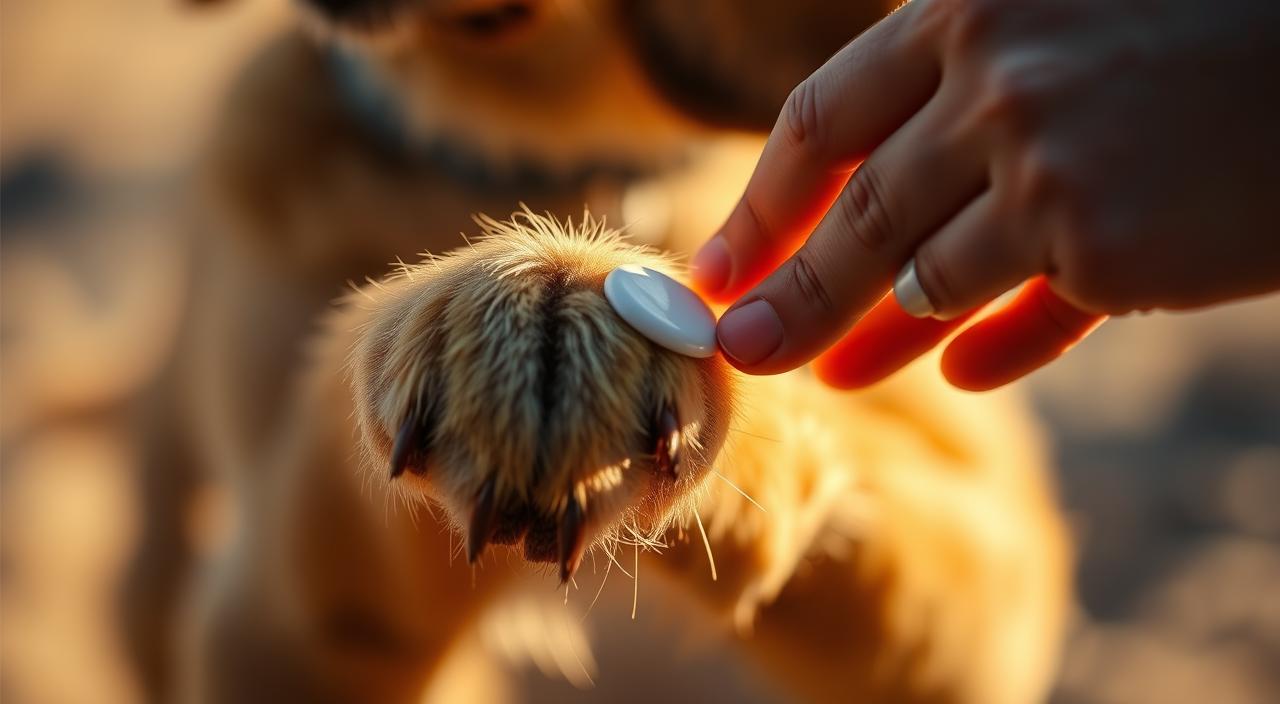
Target by coat type and tricky spots
For thick coats, focus on exposed zones only. Dense hair shields most of the body.
For thin-coated pets, massage sunscreen gently so it reaches skin beneath short hair without excess residue.
Cover the nose, ear tips, lips, belly, groin, inner thighs, and any light or bald spots. Keep product out of the eyes and apply near the face with fingers first for control.
Reapplication rules
- Reapply every 4–6 hours and after swimming, rain, heavy play, or towel-drying.
- Use a balm or stick for precision on the face; sprays or lotions work for larger body areas.
- Distract with a treat or brief play while the sunscreen absorbs to reduce licking.
- Build a routine: same order and same spots each outing so nothing is missed.
Spotting and treating sunburn in dogs
If your pet shows red, warm, or tender patches after outdoor time, act quickly to limit further damage. Early steps ease pain and lower infection risk.
Mild burn care at home: shade, cool compresses, and aloe
Move the animal indoors or into shade right away. Stopping exposure prevents the injury from worsening.
Use cool (not icy) compresses on the affected areas for 10–15 minutes at a time. Repeat several times a day to reduce heat and discomfort.
For minor irritation, a pet-safe aloe gel can soothe flaking or tight skin. Choose fragrance-free formulas and avoid products with lidocaine unless a veterinarian approves use.
When to call your veterinarian: severe redness, blistering, fever, or infection
Contact a veterinarian if the burn shows severe redness, blisters, ongoing pain, fever, pus, swelling, or if the animal stops eating. These signs may indicate deeper injury or secondary infection.
Professional treatment can include anti-inflammatory medication, topical or oral antibiotics, and wound care. The clinic can also advise on safe pain relief and measures to prevent licking.
- Recognize sunburn early: red, warm, tender, or flaking skin; pets may resist touch.
- Stop exposure: move indoors or into shade immediately.
- Cool compresses: 10–15 minutes, repeat as needed.
- Soothe minor irritation with a pet-safe aloe gel; avoid added fragrances.
- Call a veterinarian for blisters, fever, swelling, pus, or worsening pain.
- Protect the area while healing—clothing or an e-collar can prevent licking.
- Use the episode to tighten your routine: timing, coverage, and sunscreen habits reduce repeat burns.
| Sign | Immediate home care | When a veterinarian is needed |
|---|---|---|
| Mild redness, flaking | Shade, cool compresses, aloe gel | No—monitor for improvement over 48 hours |
| Blistering or severe redness | Keep area clean and cool; prevent licking | Yes—risk of deeper tissue damage and infection |
| Fever, pus, swelling | Do not apply human ointments; limit handling | Yes—possible infection requires antibiotics |
| Persistent pain or behavior change | Comfort, limit activity, record event details | Yes—veterinarian assessment for pain control and wound care |
Long-term skin health: cancer risks, grooming choices, and vet checks
Chronic ultraviolet exposure raises real risks for skin cancer in animals. Repeated damage makes lesions more likely and can lead to squamous cell carcinoma in vulnerable areas.
Skin cancer awareness: squamous cell carcinoma and early warning signs
Early signs often look like persistent red spots, flaky patches, or wart-like bumps. Any lesion that grows, bleeds, or changes color should prompt a veterinarian visit.
Shaving cautions and coat care that support natural sun protection
Fur and double coats act as a natural UV filter and help regulate temperature. Avoid close shaving of coats that double-layer; trims and regular brushing are safer options.
- Long-term UV exposure increases the risk of skin cancer—prevention is year-round.
- Monthly at-home checks—part hair along the back, belly, and inner thighs—catch changes early.
- For medical conditions that thin hair, step up sunscreen, shade, and timing habits.
| Check | Action | Frequency |
|---|---|---|
| New red or flaky spot | Photograph and consult a veterinarian | Immediate |
| Bald or thin areas | Gentle trim, sunscreen on exposed skin, extra shade | Monthly / as needed |
| Recurring lesions | Document size and changes; schedule exam | Track ongoing |
Consistent care—sunscreen, shade, proper grooming, and timely vet checks—protects long-term health and keeps pets comfortable across seasons.
Conclusion
A few steady habits—timing walks, using UPF clothing, and applying pet-formulated sunscreen—keep outdoor time low risk and enjoyable for dogs and pets alike.
Apply sunscreen about 20 minutes before exposure and reapply every 4–6 hours or after water play. Focus on vulnerable areas: nose, ear tips, belly, and groin, and carry a travel-size product in your walk kit.
Choose formulas made for pets and check ingredients—avoid zinc oxide and PABA. Watch for new or changing spots; early veterinary review helps detect squamous cell carcinoma and other cancer risks.
Small changes—shade, timing, simple products, and routine checks—cut sunburn and long-term damage. These tips fit day-to-day care and help people keep outdoor moments safe, comfortable, and fun.
